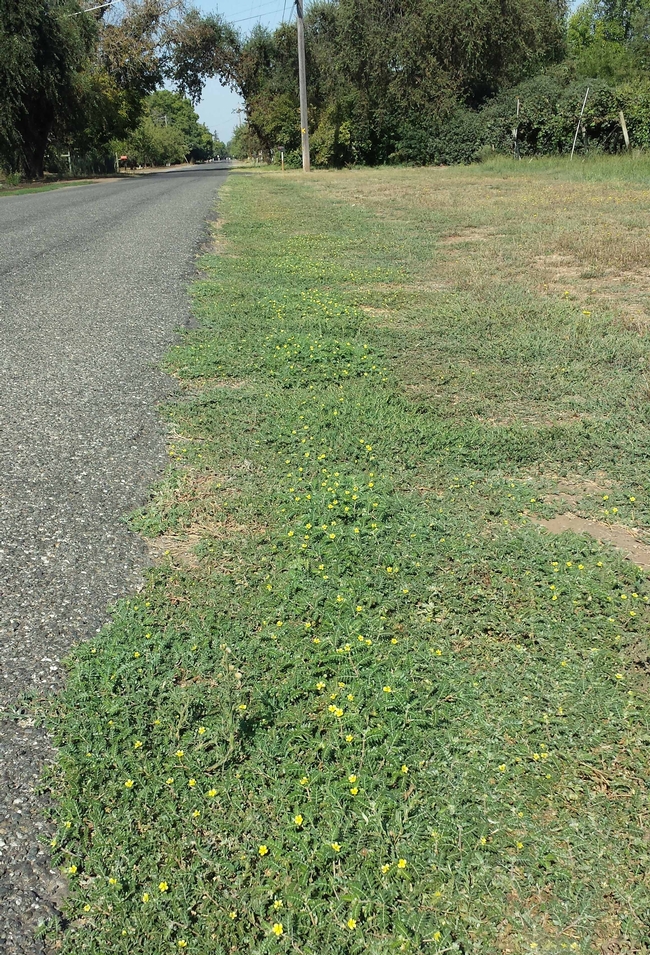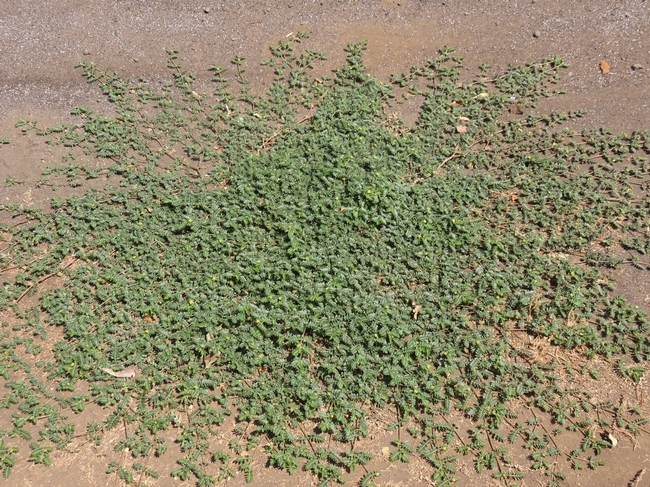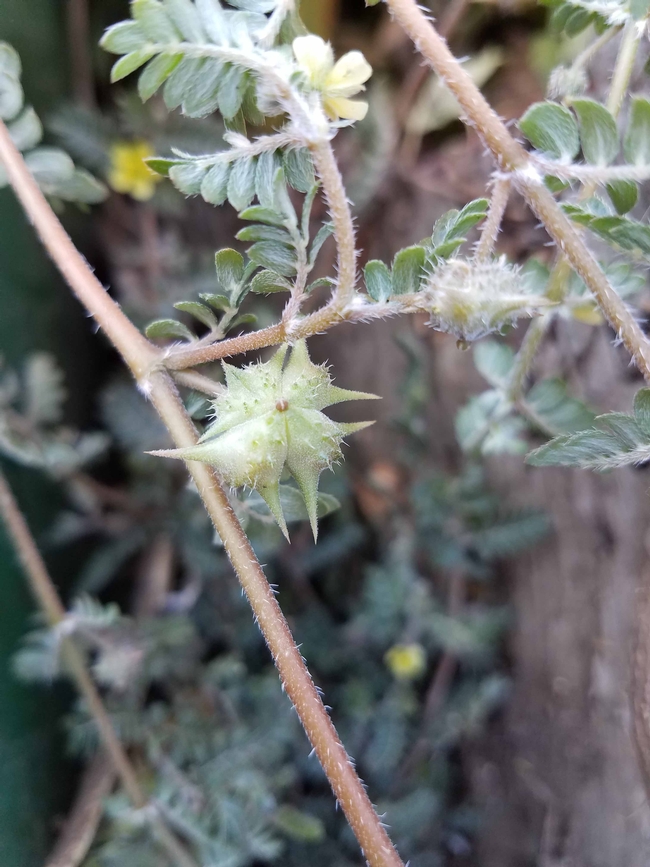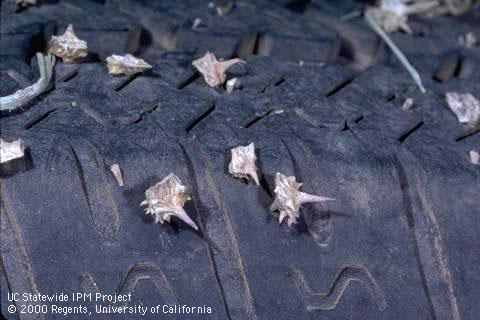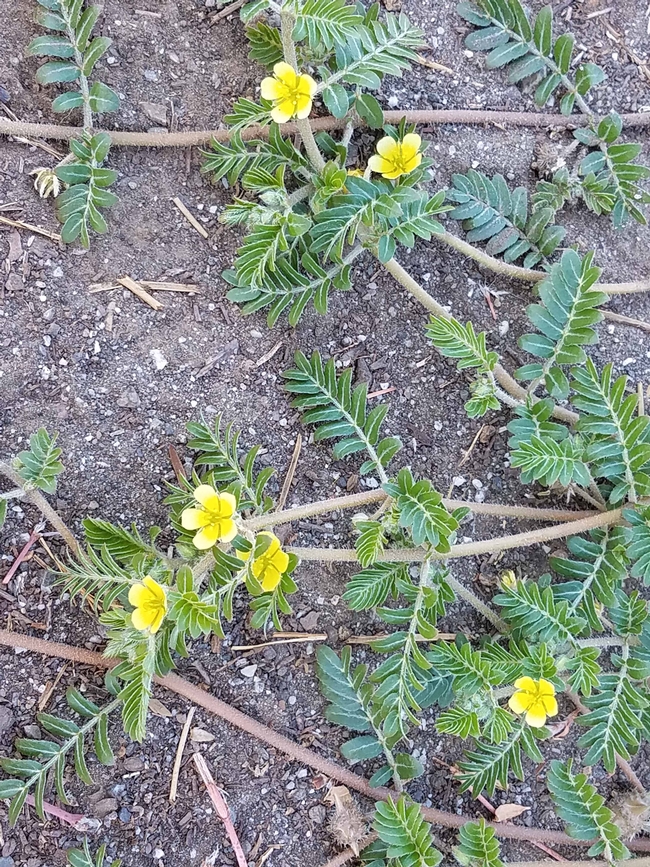Puncturevine (Tribulus terrestris) is an attractive green plant with small yellow flowers commonly seen growing prostrate along the side of the road. Puncturevine along road, J Alosi
Puncturevine raditing from taproot, J Alosi
Puncturevine seedpods, J Alosi
Unfortunately, there are is no easy way to control this noxious weed. For most homeowners, the mechanical control methods of hand removal or cutting the plant off at the taproot are most effective. Any seeds left on the ground must be removed by raking or sweeping. Use heavy gloves to protect hands from the spiky seedpods. Of course, as with any weed, it's best to remove it before it flowers and sets seeds. This is especially important for puncturevine, as seeds are viable for years, and can be spread by shoes or the wheels of lawn mowers or carts.
Dried puncturevine spikes in tires, UC ANR
Biological control using several species of weevils have been tried but are not always effective. Chemical control of puncturevine in the home garden is often unnecessary. However, in heavily infested areas, or when hand removal is difficult, herbicide may be an option.
For more information on puncturevine see the IPM Pestnote No. 74128 and the IPM Weed Gallery.
Puncturevine flowers, J Alosi
